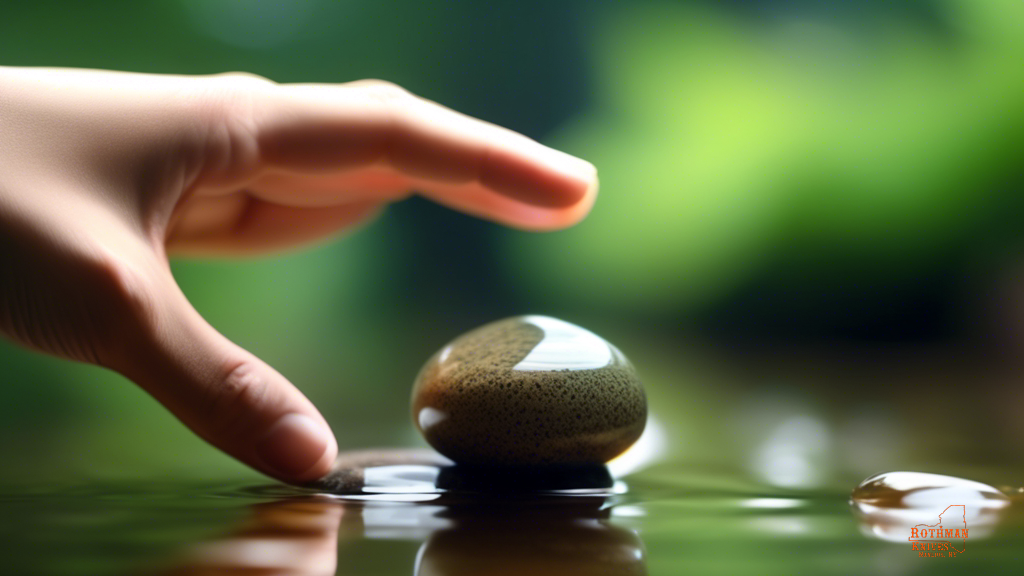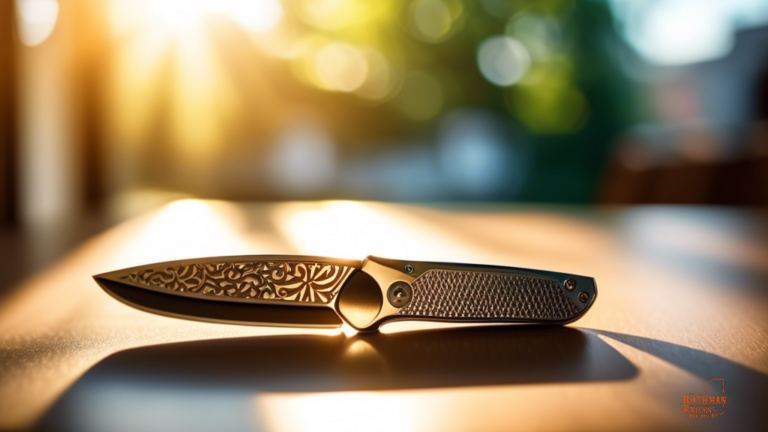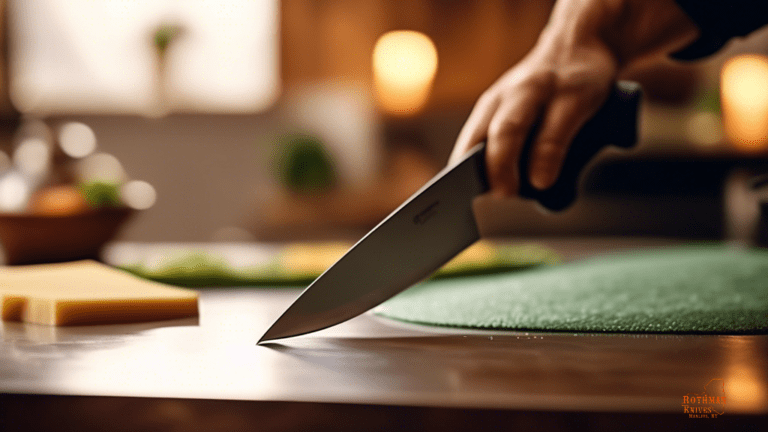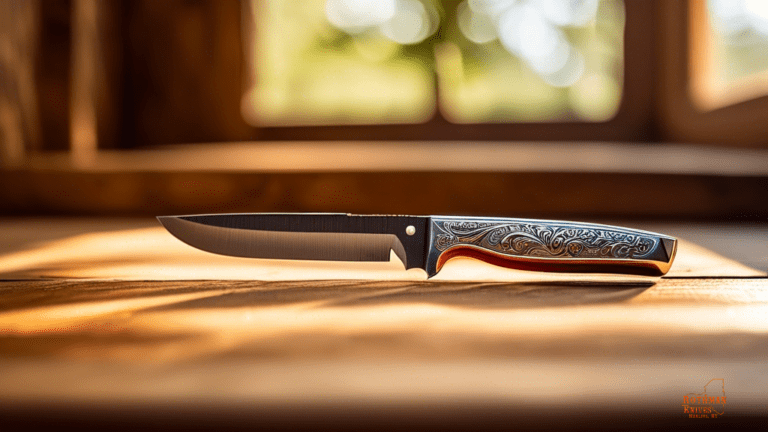Unlocking The Power Of Japanese Water Stones
by Mike Rothman · September 4, 2024
Unleash the power of Japanese water stones to achieve razor-sharp knives like never before! Learn how to elevate your sharpening game and unlock their full potential today. Click here to discover the secret behind Japanese Water Stones now!
Have you ever wondered how Japanese water stones can transform your sharpening experience? These traditional sharpening tools have a rich history and offer unique benefits that can elevate your sharpening game to the next level.
By unlocking the power of Japanese water stones, you can achieve razor-sharp edges on your knives and tools, bringing a sense of mastery and satisfaction to your sharpening routine.
Japanese water stones come in a variety of types, each with its own unique characteristics and benefits. From the coarse grit stones that quickly remove material to the finer grit stones that polish and refine the edge, there is a stone for every step of the sharpening process.
By understanding the different types of Japanese water stones and how to properly use them, you can unlock their full potential and achieve professional-level results in your sharpening endeavors.
Key Takeaways
- Japanese water stones offer a transformative sharpening experience for knives and tools.
- They have a rich history dating back centuries and are deeply connected to craftsmanship and tradition.
- Different types of Japanese water stones, such as coarse grit, fine grit, combination, and natural finish stones, cater to various sharpening needs.
- Proper usage and maintenance of Japanese water stones are crucial for achieving razor-sharp edges and prolonging their lifespan.
History of Japanese Water Stones
You may be surprised to learn that the history of Japanese water stones dates back centuries, with skilled craftsmen using these unique sharpening tools to achieve razor-sharp edges on their blades.
The art of using water stones for sharpening has been passed down through generations, creating a deep connection to the craftsmanship and tradition of Japanese blade-making.
By delving into the history of Japanese water stones, you’re not only uncovering a rich cultural heritage but also tapping into a timeless practice that has stood the test of time.
As you explore the origins of Japanese water stones, you’ll discover the meticulous attention to detail that goes into crafting these sharpening tools.
From selecting the right raw materials to the intricate process of shaping and refining the stones, Japanese artisans have perfected the art of creating high-quality sharpening stones that are sought after by blade enthusiasts around the world.
By understanding the history behind Japanese water stones, you’re not just learning about a tool but immersing yourself in a tradition that values precision, craftsmanship, and the pursuit of excellence.
Types of Japanese Water Stones
There’s a variety of options when it comes to types of Japanese water stones, each with unique characteristics and benefits.
From the coarse grit stones used for initial sharpening to the finer grit stones for polishing and finishing, there’s a stone for every step of the sharpening process.
Whether you’re a beginner or a seasoned sharpener, there’s a Japanese water stone that will suit your needs and help you achieve a razor-sharp edge on your tools.
One of the most popular types of Japanese water stones is the combination stone, which has two different grit levels on each side, making it versatile and convenient for sharpening.
Another option is the natural finish stone, which is prized for its ability to produce a mirror-like polish on blades.
Whichever type of Japanese water stone you choose, you’ll be joining a community of craftsmen and sharpening enthusiasts who appreciate the beauty and effectiveness of these traditional sharpening tools.
Benefits of Using Japanese Water Stones
Enhancing your sharpening skills with Japanese water stones can result in a razor-sharp blade that effortlessly slices through any material. The benefits of using these stones go beyond just sharpness. It’s about joining a community of craftsmen and enthusiasts who appreciate the art of blade sharpening and take pride in their work.
By using Japanese water stones, you not only improve the performance of your tools but also become a part of a tradition that dates back centuries. There is a sense of belonging that comes with mastering the techniques of sharpening with these stones, connecting you to a long line of craftsmen who have valued the art of blade maintenance.
So, embrace the benefits of Japanese water stones, and unlock the power they hold in not just sharpening your tools, but also in becoming a part of a community that values precision and tradition.
How to Properly Use Japanese Water Stones
To properly use these sharpening tools, start by soaking them in water for at least 10 minutes before beginning the sharpening process. This step allows the stone to absorb water and ensures that it provides a smooth and efficient sharpening experience. Once the stone is ready, place it on a stable surface and hold your blade at a consistent angle as you glide it across the stone in a controlled motion. Remember to maintain a steady pressure and repeat the process until you achieve the desired sharpness.
Now, let’s dive into a helpful table that outlines the steps for properly using Japanese water stones:
| Step | Description |
|---|---|
| 1 | Soak the stone in water for 10 minutes |
| 2 | Place the stone on a stable surface |
| 3 | Hold the blade at a consistent angle |
| 4 | Glide the blade across the stone in a controlled motion |
Follow these simple steps, and you’ll be on your way to unlocking the full potential of your Japanese water stones. Remember, practice makes perfect, so don’t be afraid to experiment and adjust your technique to find what works best for you.
Maintenance and Care Tips for Japanese Water Stones
Proper maintenance and care ensure that your sharpening tools remain effective and reliable over time. To keep your Japanese water stones in top condition, follow these essential tips:
- Regular Cleaning: After each use, make sure to clean your water stones with water and a soft brush to remove any metal particles or debris that may have accumulated.
- Flattening: Periodically flatten your water stones to ensure a smooth and even sharpening surface. This can be done using a flattening stone or sandpaper on a flat surface.
- Storage: Store your water stones in a cool, dry place away from direct sunlight to prevent them from drying out or becoming warped. Consider using a dedicated case or box to protect them from damage.
Taking the time to properly maintain your Japanese water stones not only prolongs their lifespan but also ensures that you get the best results when sharpening your tools. By following these care tips, you’ll be able to enjoy the full benefits of these exceptional sharpening tools for years to come.
Frequently Asked Questions
Can Japanese water stones be used on other types of knives besides Japanese knives?
Yes, Japanese water stones can be used on a variety of knives, not just Japanese ones. They are versatile and effective at sharpening all types of blades, making them a valuable tool for any knife enthusiast.
Are there any specific techniques or methods for flattening Japanese water stones?
To flatten Japanese water stones, use a flattening stone or a diamond plate. Rub the stone in circular or figure-eight motions until it is level. This ensures a smooth surface for sharpening your knives effectively.
Can Japanese water stones be used for sharpening other tools besides knives, such as scissors or gardening tools?
Yes, Japanese water stones can be used to sharpen various tools like scissors and gardening tools. Their fine grits and ability to create a sharp edge make them versatile for a variety of sharpening needs.
Are there any safety precautions to keep in mind when using Japanese water stones?
When using Japanese water stones, remember to keep your fingers clear of the blade’s path to avoid cuts. Like stepping on thin ice, caution is key to prevent accidents and ensure a safe sharpening experience.
Is there a recommended storage method for Japanese water stones to prevent damage or wear over time?
To keep your Japanese water stones in top condition, store them in a cool, dry place away from direct sunlight. Consider using a wooden box or padded case to prevent chipping or scratching.
Last Updated: July 15, 2024
Verified and Approved by:

Mike Rothman
Founder of Rothman Knives
Like This Article?
Share with your friends
Table of Contents
Latest Articles
Keep Reading
-
Exploring Innovative Designs In Folding Pocket Knives
Uncover the cutting-edge world of innovative folding knife designs that are revolutionizing the industry. From sleek modern styles to practical features, explore these must-see creations now! Click to stay ahead of the trend in pocket knives.
-
Understanding Different Sharpening Angles
Unleash the secrets of sharpening angles to elevate your tool game! Learn how to find the ideal angle for perfect sharpness every time. Sharpen like a pro today and take your skills to the next level!
-
Exploring Different Types Of Whittling Pocket Knives
Explore the diverse world of whittling pocket knives, from classic to contemporary designs. Find your ideal tool for carving projects and unleash your creativity today! Learn about different types of whittling knives now.




